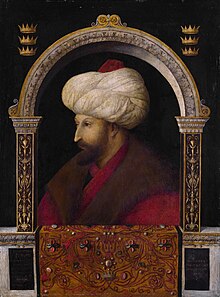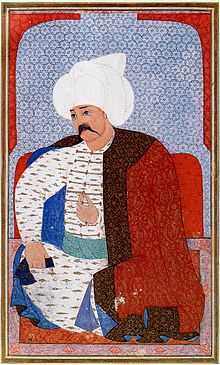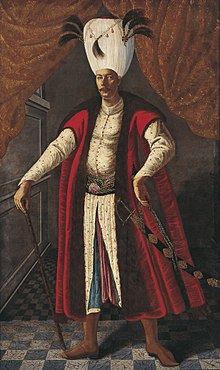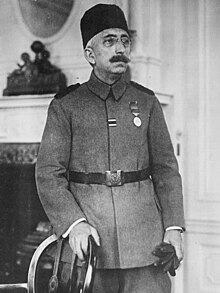The Mighty Commanders of the Ottoman Empire: Their Legacy and Contributions
Introduction
The Ottoman Empire, a sprawling realm that once dominated vast territories, owes much of its glory to the exceptional leadership of its commanders. These figures not only led armies but also shaped the destiny of nations through their strategic prowess and valor on the battlefield. In this article, we delve into the lives and achievements of seven major commanders of the Ottoman Empire, exploring their service periods, notable accomplishments, and the pivotal roles they played in shaping the empire’s history.

1. Mehmed the Conqueror (Mehmed II)
Service Period: 1444–1446, 1451–1481
Mehmed II, famously known as Mehmed the Conqueror, ascended to the Ottoman throne at a young age and left an indelible mark on history with his conquests. His most renowned achievement was the capture of Constantinople in 1453, marking the end of the Byzantine Empire and the beginning of Ottoman dominance in the region.
Key Achievements
- Capture of Constantinople: Mehmed’s siege tactics and innovative use of cannons allowed the Ottomans to breach the impregnable walls of Constantinople, securing a pivotal victory.
- Expansion of the Empire: Under Mehmed’s rule, the Ottoman Empire expanded significantly, reaching its zenith in territorial size and influence.
Role in Ottoman Empire
Mehmed the Conqueror’s reign laid the foundation for Ottoman hegemony in the Mediterranean and Balkans, establishing Istanbul as the empire’s new capital and ushering in an era of cultural and economic prosperity.

2. Selim I (Selim the Grim)
Service Period: 1512–1520
Selim I, also known as Selim the Grim, inherited an empire rife with internal strife and external threats. However, his iron-fisted rule and military campaigns solidified Ottoman control over vast territories, earning him a fearsome reputation.
Key Achievements
- Conquest of the Mamluk Sultanate: Selim’s military campaigns in the Middle East culminated in the defeat of the Mamluk Sultanate, consolidating Ottoman control over Egypt, Syria, and the Arabian Peninsula.
- Expansion into North Africa and Eastern Europe: Selim’s conquests extended Ottoman influence into North Africa and Eastern Europe, further expanding the empire’s reach.
Role in Ottoman Empire
Selim I’s reign marked a period of significant territorial expansion and consolidation, strengthening the Ottoman Empire’s position as a dominant player in the geopolitics of the era.

3. Suleiman the Magnificent
Service Period: 1520–1566
Suleiman the Magnificent, often hailed as the greatest of the Ottoman sultans, presided over a golden age of art, architecture, and military conquests. His leadership prowess earned him the title of “the Lawgiver” among his subjects.
Key Achievements
- Conquest of Belgrade and Rhodes: Suleiman’s military campaigns resulted in the capture of strategic strongholds such as Belgrade and Rhodes, expanding Ottoman influence in Europe.
- Siege of Vienna: Although unsuccessful, Suleiman’s siege of Vienna in 1529 demonstrated the Ottoman Empire’s military might and ambition to expand into Central Europe.
Role in Ottoman Empire
Suleiman’s reign is synonymous with the peak of Ottoman power and cultural achievement, with his legal reforms and patronage of the arts leaving a lasting legacy that endures to this day.

4. Mehmed IV
Service Period: 1648–1687
Mehmed IV ascended to the Ottoman throne during a period of internal turmoil and external threats, including wars with European powers and revolts within the empire. Despite the challenges, Mehmed’s reign witnessed both military victories and setbacks.
Key Achievements
- Successful Campaigns in Ukraine: Mehmed IV’s military campaigns in Ukraine resulted in significant territorial gains for the Ottoman Empire, extending its reach into Eastern Europe.
- Siege of Vienna (1683): While ultimately unsuccessful, the Ottoman siege of Vienna in 1683 highlighted Mehmed’s ambition to expand Ottoman influence into Central Europe.
Role in Ottoman Empire
Mehmed IV’s reign reflects the complexities of Ottoman politics and military strategy during a period of decline, as the empire grappled with internal dissent and external pressures from rival powers.

5. Mustafa Kemal Atatürk
Service Period: 1919–1922
Mustafa Kemal Atatürk, although not a traditional Ottoman commander, played a pivotal role in the empire’s transformation into modern-day Turkey. As the founder of the Republic of Turkey, Atatürk implemented sweeping reforms and modernization efforts.
Key Achievements
- Turkish War of Independence: Atatürk led the Turkish National Movement in a successful struggle against Allied occupation forces, securing Turkey’s independence and sovereignty.
- Reforms and Modernization: Atatürk’s reforms, known as Kemalism, aimed at secularizing Turkish society, modernizing its institutions, and promoting Westernization.
Role in Ottoman Empire
Atatürk’s legacy as the founder of modern Turkey marks a significant departure from the Ottoman past, yet his leadership during the tumultuous period following World War I shaped the destiny of the former Ottoman territories.

6. Mehmed VI
Service Period: 1918–1922
Mehmed VI, the last reigning Sultan of the Ottoman Empire, faced the daunting task of navigating the empire through its final years amidst the chaos of World War I and the emergence of nationalist movements across its territories.
Key Achievements
- End of the Ottoman Empire: Mehmed VI’s reign witnessed the dissolution of the Ottoman Empire, culminating in the signing of the Treaty of Sèvres in 1920, which partitioned Anatolia and threatened the empire’s existence.
- Abdication and Exile: Following the establishment of the Republic of Turkey, Mehmed VI abdicated the throne and went into exile, marking the end of centuries of Ottoman rule.
Role in Ottoman Empire
Mehmed VI’s reign symbolizes the twilight years of the Ottoman Empire, as it struggled to adapt to the challenges of the modern world and ultimately gave way to the birth of a new nation-state in Turkey.

7. Osman I (Osman Gazi)
Service Period: 1299–1326
Osman I, the founder of the Ottoman dynasty, laid the groundwork for the empire’s future expansion and conquests. His vision and leadership transformed a small Anatolian principality into a mighty empire that would endure for centuries.
Key Achievements
- Founding of the Ottoman Dynasty: Osman I established the Ottoman Beylik in northwestern Anatolia, laying the foundation for the future Ottoman Empire.
- Expansion and Conquest: Under Osman’s leadership, the Ottoman Beylik expanded its territory through strategic alliances and military conquests, paving the way for future Ottoman rulers.
Role in Ottoman Empire
Osman I’s legacy as the founder of the Ottoman Empire is unparalleled, as his leadership and vision set the stage for centuries of Ottoman expansion and influence in the region. His ability to unite disparate tribes and forge a cohesive state laid the groundwork for the empire’s subsequent rise to prominence.

Conclusion
The commanders of the Ottoman Empire, from the visionary Osman I to the reformist Mustafa Kemal Atatürk, each played a unique role in shaping the empire’s destiny. Through conquests, diplomacy, and governance, these leaders left an enduring legacy that continues to influence the modern world. Their military prowess, administrative acumen, and cultural patronage laid the foundation for the Ottoman Empire’s status as a global power for over six centuries.
Frequently Asked Questions (FAQs)
What were the main factors contributing to the decline of the Ottoman Empire?
The decline of the Ottoman Empire was influenced by a combination of internal factors such as administrative inefficiency, economic stagnation, and social unrest, as well as external pressures from European powers and nationalist movements within its territories.
How did the Ottoman Empire impact the development of modern Turkey?
The Ottoman Empire’s legacy is deeply intertwined with modern Turkey, as the reforms and modernization efforts initiated by leaders like Mustafa Kemal Atatürk paved the way for the establishment of the Republic of Turkey and its transition into a modern nation-state.
What role did religion play in the governance of the Ottoman Empire?
Religion, particularly Islam, played a significant role in the governance of the Ottoman Empire, serving as both a unifying force and a source of legitimacy for the ruling elite. However, the empire was known for its religious tolerance, allowing diverse religious communities to coexist within its territories.
How did the Ottoman Empire influence the cultures of the regions it conquered?
The Ottoman Empire had a profound impact on the cultures of the regions it conquered, blending elements of Turkish, Arab, Persian, and European traditions to create a rich tapestry of artistic, architectural, and culinary heritage that endures to this day.
What lessons can be learned from the history of the Ottoman Empire?
The history of the Ottoman Empire offers insights into the complexities of empire-building, the challenges of governance in diverse societies, and the importance of adaptability and reform in the face of changing geopolitical dynamics.


This is the right webpage for anybody who wishes to understand this topic. You realize so much its almost tough to argue with you (not that I really will need to…HaHa). You certainly put a fresh spin on a topic which has been discussed for ages. Excellent stuff, just wonderful!